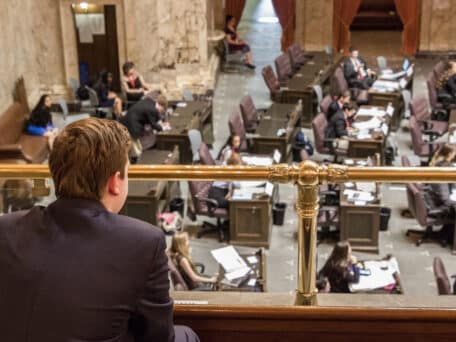Sound Transit will ask voters to consider ST3, its latest $15 billion spending package, in 2016. As Shift reported, the transit agency lost no time in preparing the pro-ST3 message. The agency kicked off its campaign before the state Legislature even passed the transportation package that granted permission to seek funding for ST3.
Based on messaging thus far, it is becoming increasingly clear that Sound Transit plans to promote ST3 by claiming it would reduce traffic congestion. Indeed, in an area where congestion is the primary transportation concern, the strategy should come as no surprise. Here’s what King County Executive Dow Constantine (who also chairs Sound Transit’s unelected board) recently told the Seattle Times,
“‘[Traffic] is unacceptable. It’s terrible for people’s individual lives,’ Sound Transit Chairman Dow Constantine, who is King County executive, said last week. He mentioned Seattle’s top-five national ranking for traffic delay.
“‘We know we can’t build our way out of congestion. What we can do is create light rail to take you where you want to go, when you want to go, on time, every time, for work, for play, for school.’”
Contrary to what Constantine and other Sound Transit officials want voters to believe, ST3 will not reduce traffic congestion. The transit agency’s head, Joni Earl, admitted as much when she said, “We’ve never said we will reduce congestion.” That’s because the reality is that commuters choose light rail less than 1 percent of the time. The Washington Policy Center explains what that means for ST3’s ability to reduce traffic,
“Federal estimates show people in the average household make 9.5 trips per day. Within Sound Transit’s district, that equals 3.9 billion total trips every year. Sound Transit’s total light rail ridership last year was approximately 11 million, or 0.28 percent of all trips people made in the taxing district. The Puget Sound Regional Council estimates that, even after light rail is vastly expanded, light rail would carry less than 1 percent of daily trips by 2040.”
A mass transit system projected to carry less than 1 percent of daily commuters cannot possibly reduce traffic congestion. Investing more of taxpayers’ hard earned dollars into a system that does not solve the key problem, i.e. traffic congestion, for daily commuters is, simply put, a bad idea.
Rather than parading false claims, Sound Transit officials would do better to answer one important question: “Why, given all the broken promises, should taxpayers trust Sound Transit to keep its promises and spend their hard-earned dollars responsibility, on time and on budget?”




